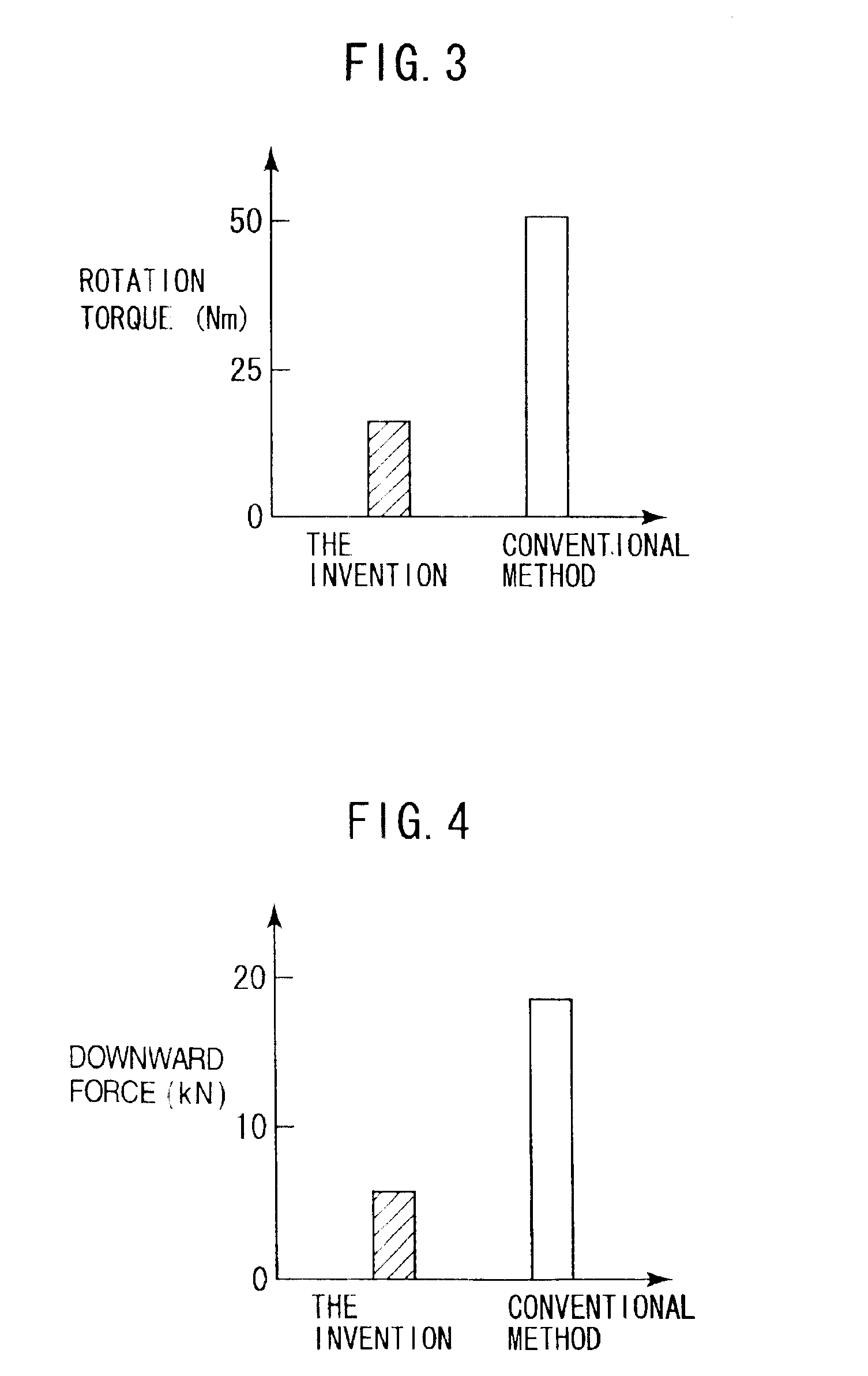Friction stir welding method
- Summary
- Abstract
- Description
- Claims
- Application Information
AI Technical Summary
Benefits of technology
Problems solved by technology
Method used
Image
Examples
embodiment 1
FIG. 1 is a cross sectional view showing a state, in which a welding tool is plugged into a welding zone of workpieces. FIG. 2 is a perspective view. However, illustration of a power supply device is omitted. A welding tool 1 comprises a large-diameter shoulder 2 and a small-diameter pin 3. The welding tool 1 is press-fitted into workpieces 6 while rotating. In this state, welding is performed by moving the welding tool 1 in a welding direction as shown in FIG. 2. The welding tool 1 is held by a bearing 4 and a spindle wall 5. Also, a power supply device 10 allows a current to flow between the spindle wall 5 and the workpieces 6.
Rotation of the welding tool 1 causes metal flow of the workpieces 6 to form a metal flow zone 8. The metal flow zone 8 may be considered to correspond to a stir zone 11 shown in FIG. 2.
A conductive ceramic 7 is coated on that surface portion of the welding tool 1, which contacts with the workpieces 6. When the power supply device 10 allows a current to flow...
embodiment 2
In FIG. 5, only surfaces of the pin 3 on the welding tool 1 are coated with the conductive ceramic 7, and surfaces of the shoulder 2 are coated with an insulating ceramic 21. It is desired that Sialon, Silicon Nitride (Si3N4), or the like be used for the insulating ceramic 21. Also, the insulating ceramic may be the same in thickness and coating method as the conductive ceramic. In the embodiment, heat can be selectively generated only on surfaces of the pin 3 because the insulating ceramic 21 generates no heat. Generally, resistance heating is desirably generated on the pin 3 from a point of view that temperature should be prevented from rising excessively near the shoulder 2 because friction heat is generated in a higher ratio on the surfaces of the shoulder 2 than on the surfaces of the pin 3 due to a large peripheral speed of the shoulder.
embodiment 3
FIG. 6 shows an embodiment, in which the insulating ceramic 21 is coated on the surfaces of the shoulder 2 and a surface of a root of the pin 3 and the conductive ceramic 7 is coated on a tip end of the pin so that only the tip end of the pin 3 causes resistance heating. According to the embodiment, it is possible to control a temperature distribution in the metal flow zone 8. While a calorific value is much generated on the surfaces of the shoulder 2, which are largest in peripheral speed, in the conventional method and so temperature becomes too high in some cases, resistance heating is caused only at the tip end of the pin 3 in the embodiment, so that the metal flow zone 8 is made uniform in temperature to enable welding with no defect even when the welding speed is increased.
PUM
| Property | Measurement | Unit |
|---|---|---|
| Force | aaaaa | aaaaa |
| Electrical conductivity | aaaaa | aaaaa |
| Diameter | aaaaa | aaaaa |
Abstract
Description
Claims
Application Information
 Login to View More
Login to View More - R&D
- Intellectual Property
- Life Sciences
- Materials
- Tech Scout
- Unparalleled Data Quality
- Higher Quality Content
- 60% Fewer Hallucinations
Browse by: Latest US Patents, China's latest patents, Technical Efficacy Thesaurus, Application Domain, Technology Topic, Popular Technical Reports.
© 2025 PatSnap. All rights reserved.Legal|Privacy policy|Modern Slavery Act Transparency Statement|Sitemap|About US| Contact US: help@patsnap.com



